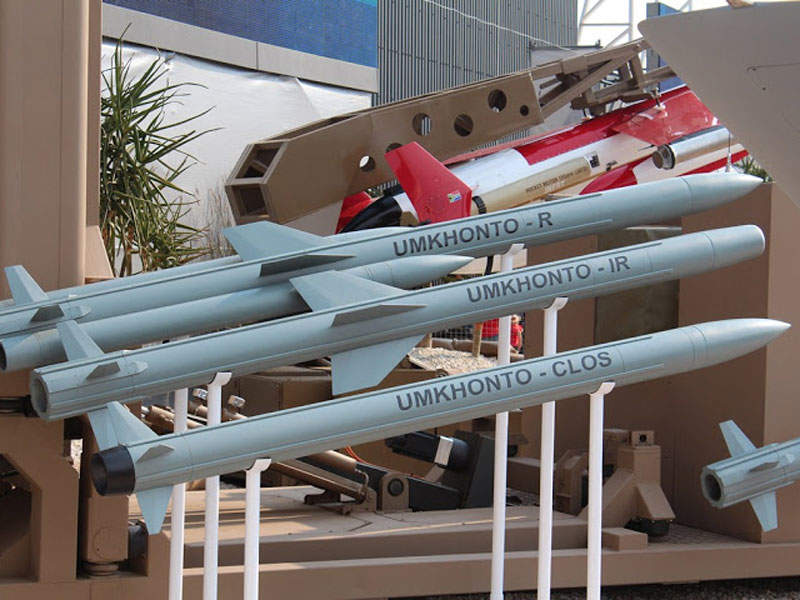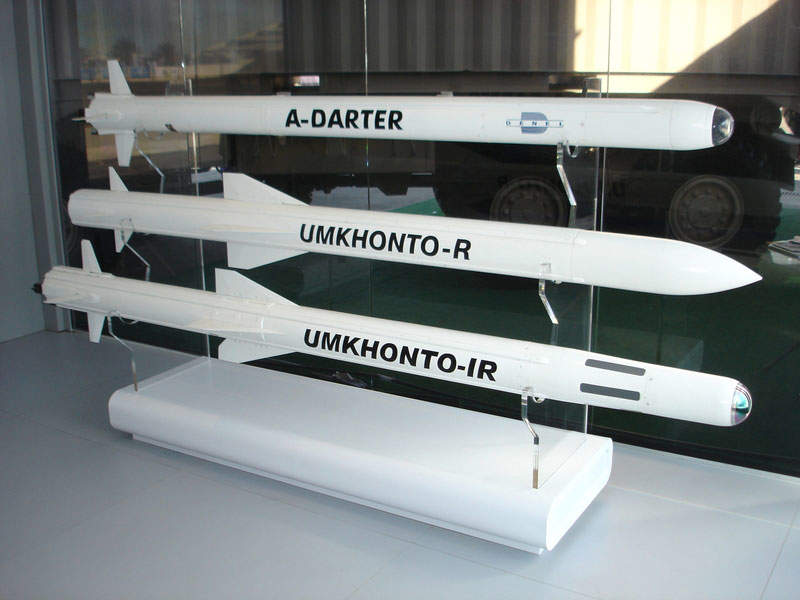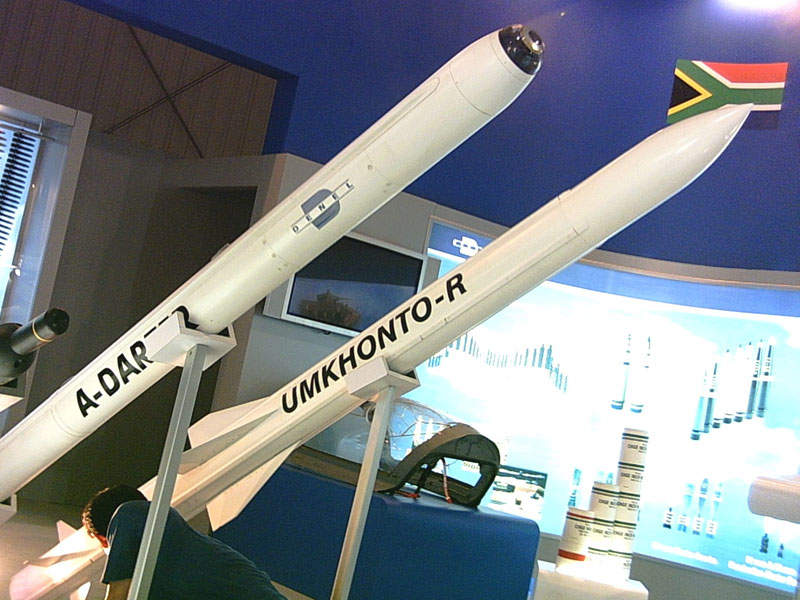Umkhonto surface-to-air missiles (SAM) have been made operational by the Navies of South Africa and Finland.
Designed to provide air defence capabilities for naval forces, they were developed by Denel Dynamics, a weapons manufacturer based in South Africa.
The missile is also known as Spear and can engage a wide range of airborne threats, such as combat aircraft, helicopters, missiles and unmanned aerial vehicles.
The weapon has been deployed on 12 naval vessels as of December 2016.
Umkhonto missile variants
The infrared (IR) guided variant Umkhonto-IR is developed in versions Block 1, 2 and 3 with ranges of 12km, 15km and 20km, respectively. Radar-guided variant Umkhonto-R is currently under development.
Denel Dynamics announced its plans to develop variants including Umkhonto extended range infrared (EIR) and Umkhonto long-range (LR) to increase the range of the weapon up to 60km in July 2014.
Umkhonto SAM development
The Umkhonto air-defence missile performed its first launch from SAS Amatola, the first of four Valour-class MEKO A-200SAN frigates of the South African Navy near Cape Agulhas in November 2005.
The Block 2 version was selected by the Finnish Navy to equip its Hamina-class fast-attack craft in 2002. It also arms the Finnish Navy’s Hämeenmaa-class minelayers.
Denel Dynamics received an order in 2012 to deliver Umkhonto-IR missiles, fire control equipment, and missile rounds for integration into two MEKO A200-AN frigates built by ThyssenKrupp Marine Systems for the Algerian Navy.
The Umkhonto-IR missile is scheduled to undergo final testing on the first MEKO A200-AN frigate in 2017. Each frigate can be equipped with a 32-cell Umkhonto-IR vertical launch missile system.
Design and features of Umkhonto surface-to-air missile
The Umkhonto SAM can be integrated into naval combat or ground-based air defence systems. It has the ability to engage up to four targets simultaneously.
Its length and diameters are 3.32m and 0.18m, respectively, and it can be stored in a cylindrical launch canister, which has a length of 3.8m and diameter of 0.65m. Four wings spanning 0.5m are attached to the middle section with four aerodynamic control fins on the tail.
With a launch weight of 135kg and resistance to countermeasures, the weapon’s nose cone houses an infrared seeker, active proximity fuze, batteries and missile central processing unit. The middle section accommodates inertial sensors, safety and arming device, warhead and igniter.
Components mounted in the aft body section include a servo unit, antenna, thrust vector control unit, command uplink receiver and aerodynamic control fins.
Guidance and warhead
The Umkhonto SAM’s launch platform detects and tracks targets using a 3D target acquisition radar. The missile is launched vertically after target detection and moves towards a predicted lock-on point using an inertial navigation system. It is then locked on the target using the passive imaging IR seeker.
The ground-based radar allows the missile to engage manoeuvring targets by transmitting target information through a telecommand link.
A 23kg warhead, coupled with a proximity fuze, provides higher hit-to-kill capability against aircraft and missiles.
Propulsion and performance of Umkhonto SAM
Power for the Umkhonto SAM is provided by a high-performance, low-smoke, composite solid propellant rocket motor mounted in a composite material casing.
The air defence missile has a maximum speed of mach 2 and can fly at an altitude of 8km. It can travel to a range of up to 20km and reach up to 8km in 18 seconds.
The tail-mounted thrust vector control system provides better manoeuvrability and aerodynamic control at high-altitudes.





